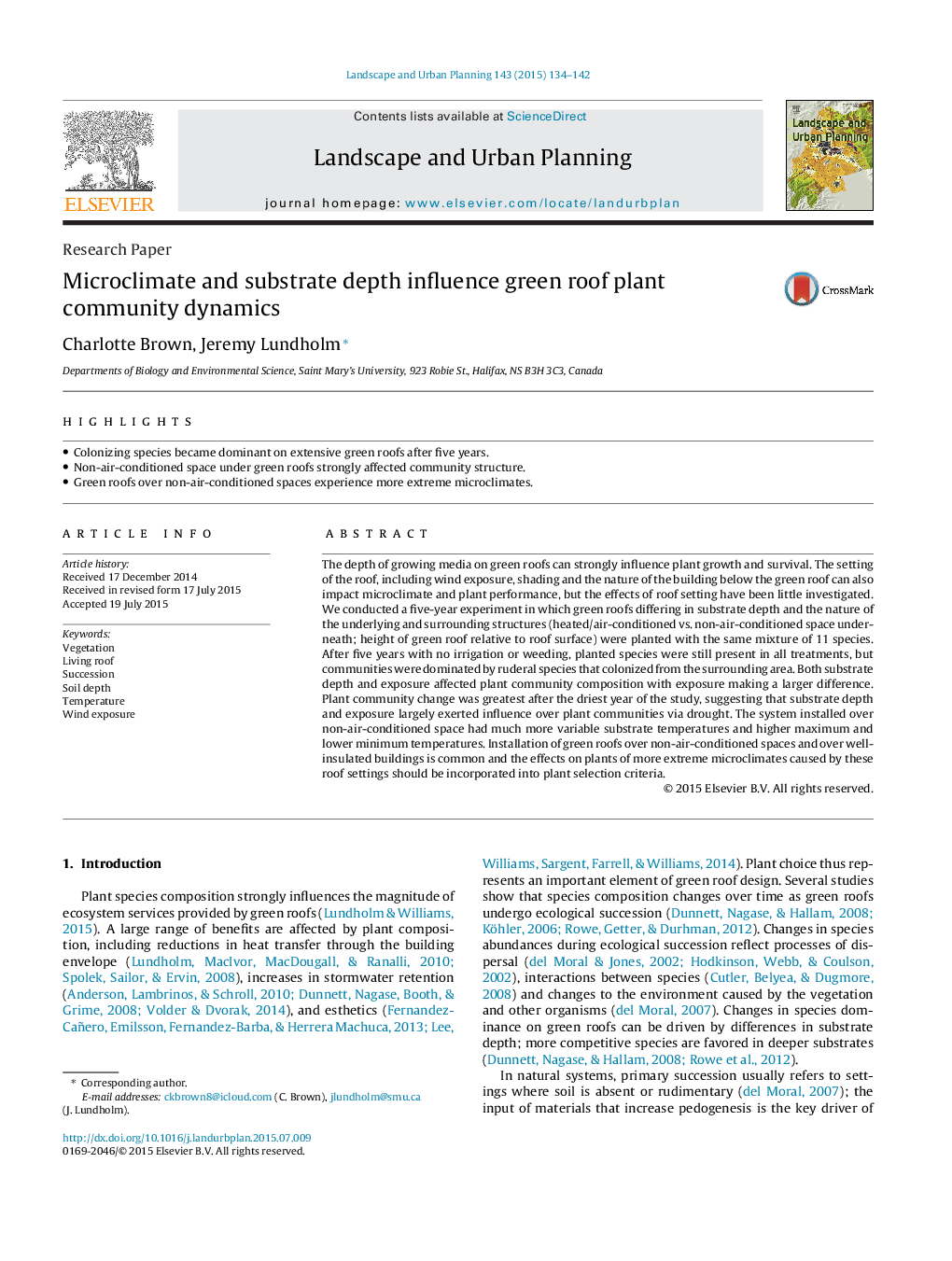| Article ID | Journal | Published Year | Pages | File Type |
|---|---|---|---|---|
| 7461005 | Landscape and Urban Planning | 2015 | 9 Pages |
Abstract
The depth of growing media on green roofs can strongly influence plant growth and survival. The setting of the roof, including wind exposure, shading and the nature of the building below the green roof can also impact microclimate and plant performance, but the effects of roof setting have been little investigated. We conducted a five-year experiment in which green roofs differing in substrate depth and the nature of the underlying and surrounding structures (heated/air-conditioned vs. non-air-conditioned space underneath; height of green roof relative to roof surface) were planted with the same mixture of 11 species. After five years with no irrigation or weeding, planted species were still present in all treatments, but communities were dominated by ruderal species that colonized from the surrounding area. Both substrate depth and exposure affected plant community composition with exposure making a larger difference. Plant community change was greatest after the driest year of the study, suggesting that substrate depth and exposure largely exerted influence over plant communities via drought. The system installed over non-air-conditioned space had much more variable substrate temperatures and higher maximum and lower minimum temperatures. Installation of green roofs over non-air-conditioned spaces and over well-insulated buildings is common and the effects on plants of more extreme microclimates caused by these roof settings should be incorporated into plant selection criteria.
Related Topics
Life Sciences
Agricultural and Biological Sciences
Ecology, Evolution, Behavior and Systematics
Authors
Charlotte Brown, Jeremy Lundholm,
